Discover 11 hidden attractions, cool sights, and unusual things to do in Grinnell (United States). Don't miss out on these must-see attractions: Merchants' National Bank, Goodnow Hall, and Christian Science Society. Also, be sure to include Faulconer Gallery in your itinerary.
Below, you can find the list of the most amazing places you should visit in Grinnell (Iowa).
Table of Contents
Merchants' National Bank

Building in Grinnell, Iowa. The Merchants' National Bank building is a historic commercial building located in Grinnell, Iowa. It is one of a series of small banks designed by Louis Sullivan in the Midwest between 1909 and 1919. All of the banks are built of brick and for this structure he employed various shades of brick, ranging in color from blue-black to golden brown, giving it an overall reddish brown appearance. It was declared a National Historic Landmark in 1976 for its architecture. In 1991 it was listed as a contributing property in the Grinnell Historic Commercial District.[1]
Address: 833 4th Avenue, Grinnell
Goodnow Hall
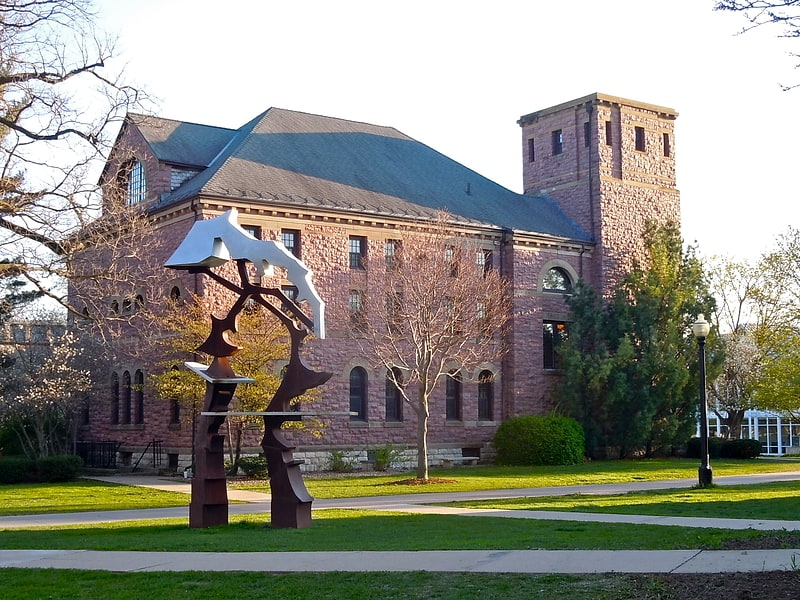
Building in Grinnell, Iowa. Goodnow Hall is a historic structure located on the Grinnell College campus in Grinnell, Iowa, United States. A tornado struck the college's campus in 1882, and this was one of four buildings that replaced the destroyed buildings. It is now the oldest building on campus. The other three are no longer extant. The building is named for Edward A. Goodnow, who was a well-known abolitionist and reformer who promoted public education for women. He donated $10,000 to the college to construct this building, which was the library until 1905. It was converted into office space and classrooms after that time. It was renovated again in 1995, and it housed the Department of Anthropology and later the Department of Gender, Women's, and Sexuality Studies. The three-story building was designed by Worcester, Massachusetts architect Stephen C. Earle in the Richardsonian Romanesque style. It features a tower on the northwest corner of the structure that was originally capped by a domed astronomical observatory. The exterior is composed of rusticated Sioux Falls granite. The building was listed on the National Register of Historic Places in 1979.[2]
Address: 1118 Park Street, Grinnell
Christian Science Society
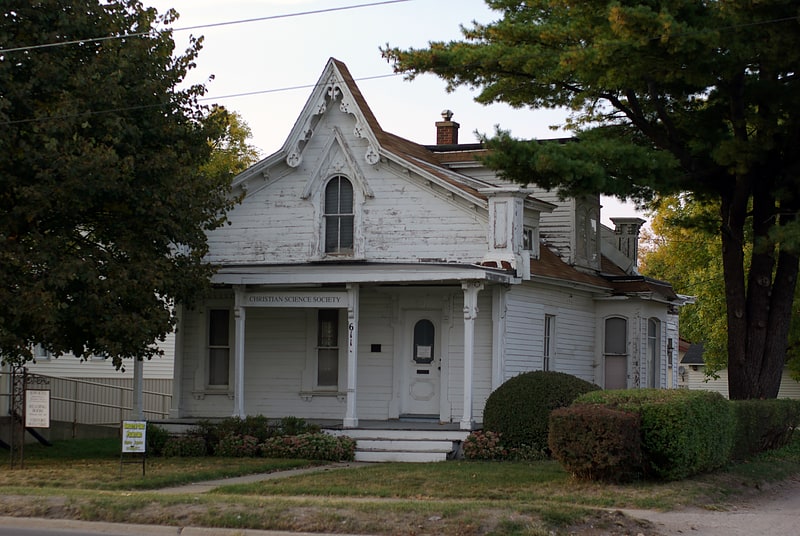
Charles H. Spencer House, formerly Christian Science Society and First Church of Christ, Scientist, Grinnell, located in Grinnell, Iowa, in the United States, is an historic Carpenter Gothic house which was converted into a church. On January 25, 1980, it was added to the National Register of Historic Places.[3]
Faulconer Gallery
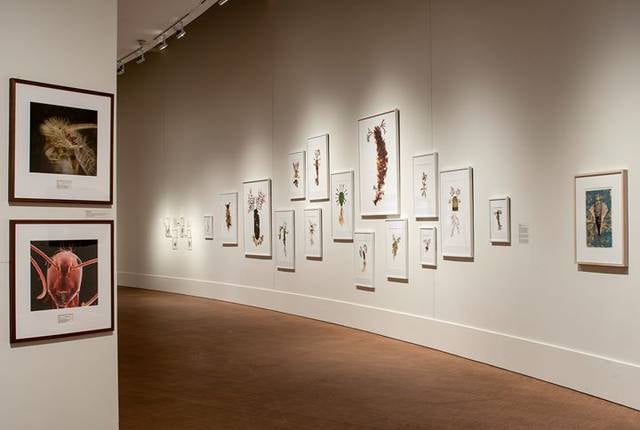
Top attraction, Art museum, Museum
Address: 1108 Park St, 50112-1643 Grinnell
Bucksbaum Center for the Arts
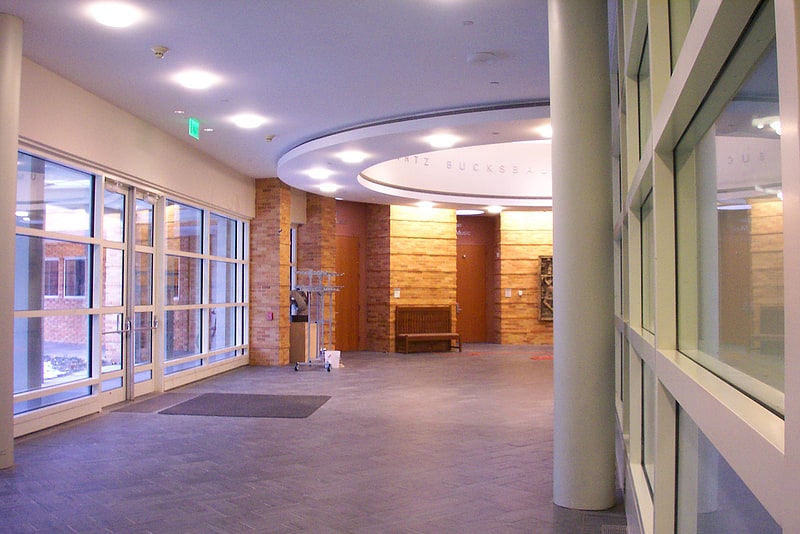
Art center in Grinnell, Iowa. The Bucksbaum Center for the Arts is part of Grinnell College, located in Grinnell, Iowa. The center was completed in May 1999, and actually contains the old Fine Arts complex. The center was designed by renowned architect César Pelli.
The facilities include:
- Faulconer Gallery - A 7,420-square-foot (689 m2) gallery space that houses the college's Permanent Collection as well as traveling exhibitions. The gallery is named for donors Vernon and Amy Faulconer.
- The Sebring-Lewis Recital Hall - A 4,050-square-foot (376 m2) concert hall.
- The Flanagan Studio Theatre - A 2,000-square-foot (190 m2) theatre (formerly the Arena Stage), named for Federal Theatre Project director and 1911 Grinnell graduate Hallie Flanagan.
- The Roberts Theatre - A traditional thrust-stage theatre that seats 450 people.
- The Wall Performance Lab - A black box theatre.
- 6 fully equipped art studios, in addition to a computer lab, scene shop, dance studio, and 15 practice rooms.
Address: 1108 Park St, Grinnell
Mears Cottage

Building in Grinnell, Iowa. Mears Cottage, also known as Mears Hall, is a historic structure located on the Grinnell College campus in Grinnell, Iowa, United States. Originally known as Iowa College, it was the second institution west of the Mississippi River to admit women as students. The first degree was awarded to a woman ten years later. The increase in the number of female students and a destructive tornado that hit the campus in 1882 were the impetus for rebuilding the campus. Edward A. Goodnow, a reformer from Worcester, Massachusetts who promoted public education for women donated the funds to build the cottage-style facility to house female students. It was named for Mary Grinnell Mears, who was the daughter of J.B. and Julia Chapin Grinnell and wife of the Rev. David O. Mears. The building opened on January 1, 1889, with thirty women and a housemother as residents. Each room contained closet space, toilet, medicine cabinet, dresser, study table with attached shelves, chairs, rug and cot. It was the first building on campus with electric lights, installed in the 1890s. New York City architect Charles D. Marvin designed the expansion of the building in 1903, and by 1915 it was connected to other buildings in the women's quadrangle. The building became coed in 1978, and closed the next year because of its deteriorating condition. It sat unused for several years until alumni John H. and Lucile Hanson Harris provided the funds for its renovation. It reopened in 1986. The building was listed on the National Register of Historic Places in 1979.[5]
Address: 1213 6th Avenue, Grinnell
Stewart Library

Public library. The Stewart Building, formerly home to Stewart Library and current home to the Grinnell Area Arts Council, is a historic building located in Grinnell, Iowa, United States. Joel Stewart was a farmer, banker, and state legislator who was known for his philanthropic activities. Included in these activities was the organization and construction of a public library for Grinnell. He planned for the structure, superintended the construction, and turned it over to the city free and clear. The library was dedicated on May 9, 1902. The three-story, brick building follows the Romanesque Revival style, and contains 5,458.8 square feet of space. It served the community as the public library from the time it opened until November, 2009, when the library moved to the new Drake Community Library located at 930 Park Street. In 2009 the Grinnell Area Arts Council entered into an agreement with the city to rent the building once the new library building was completed. They took ownership of the building in July 2013 with the understanding that they would make the necessary infrastructure improvements. The meeting room on the top floor was converted into the Loft Theatre, and it opened in August 2014. It was listed on the National Register of Historic Places in 1976.[6]
Farmers Mutual Reinsurance Company Building
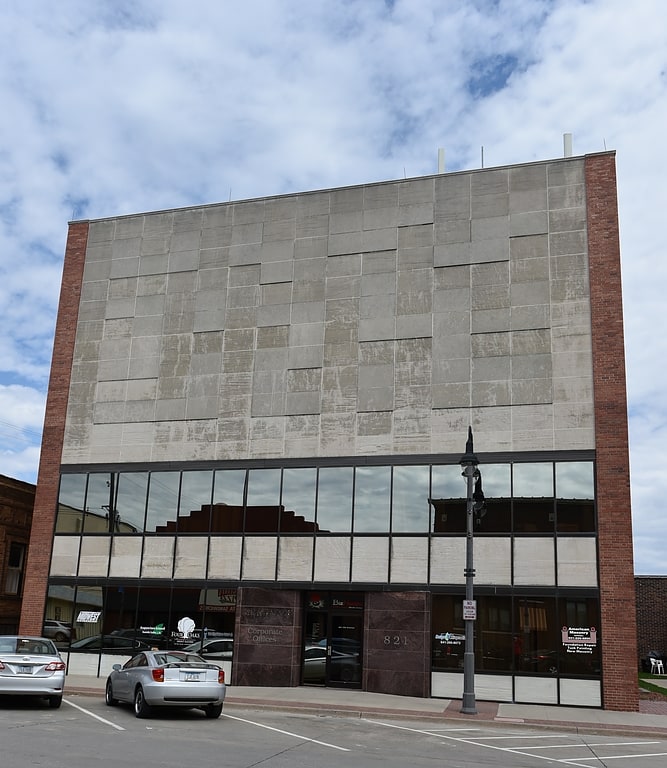
Building. The Farmers Mutual Reinsurance Company Building is a historic structure located in Grinnell, Iowa, United States. "The Iowa Farmers Mutual Reinsurance Association was the first statewide organization of its kind in the United States." When it moved to Grinnell from Jefferson, Iowa in 1934 its name was changed to Farmers Mutual Reinsurance Company. It was still a relatively small operation at the time that required only simple rented upstairs quarters. The present building was first occupied in 1951, but only the first two floors were built. The top two floors were completed in 1957, and gave the building its present form. The company rented out the first floor to other commercial businesses. Farmers Mutual Reinsurance Company moved out of building in 1962 to a larger complex south of Grinnell, and at that time became known as the Grinnell Mutual Reinsurance Company. This building was sold to the General Telephone Company, which occupied the whole building until 1968. The Trustees of Iowa College, GTE Data of Iowa, and DeLong's Sportswear have all subsequently owned the building.
Des Moines architect Gerald I. Griffith was responsible for designing both phases of the Modern Movement structure. Both phases were built by the Lovejoy Construction Company, also of Des Moines. The main facade is composed of gray shot-sawn Indiana limestone panels. The lower two floors feature bands of windows. The upper two floors are all stone veneer that is ornamented with a random patterning of projecting panels that have been sand blasted to a smoother surface, with shot-sawn panels. The building was listed on the National Register of Historic Places in 2013.[7]
Pioneer Oil Company Filling Station

The Pioneer Oil Company Filling Station is a historic building located in Grinnell, Iowa, United States. The northern half of the building dates back to the 1920s when it was associated with a local farmers' cooperative. One of the services they provided was selling gasoline. The building was expanded in 1931 into a more traditional filling station as selling fuel became a more prominent part of the operation. The building attained its present appearance in 1937 when the service bays and the decorative brick veneer were added. It retained its original name, "Pioneer Oil Company," throughout its time as a service station even though it became affiliated with Mobilgas in 1936. That affiliation ended in 1962. During World War II it became a tire inspection center under the wartime tire rationing program. The service station ceased operations around 2004. The building was re-purposed into the Mobil Wash and Wax, an automotive detailing business located in the service bays, and the Candyland Cafe in the northern portion of the building. It was listed on the National Register of Historic Places in 2013.[8]
Bowers and McDonald Office Building
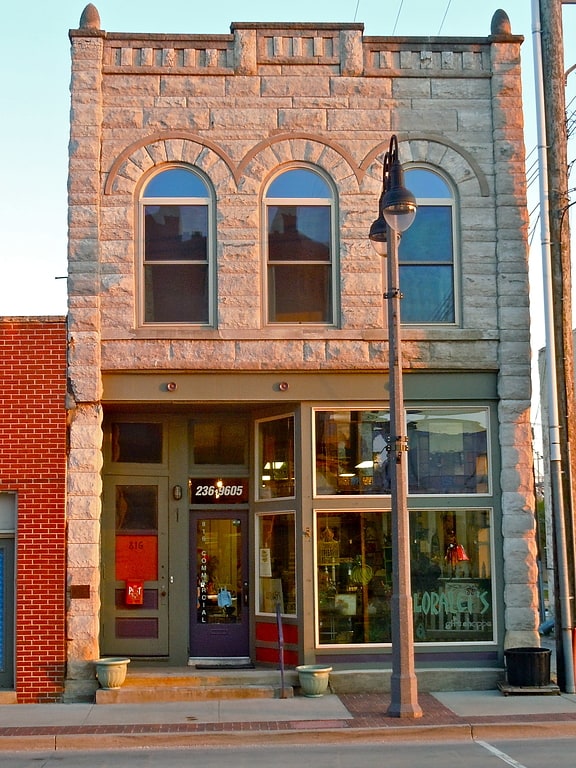
Building. The Bowers and McDonald Office Building is a historic structure located in Grinnell, Iowa, United States. J.B. Bowers and M.W. McDonald had the building built as a speculative real-estate venture. Its construction is attributed to R.G. Coutts, a native of Scotland who settled in Grinnell in 1873, who was a stone cutter, mason, building contractor, and real-estate developer. Located in the city's central business district, it was one of the buildings constructed after a fire leveled a portion of the district in 1889. The two-story, brick structure has a main facade of stone veneer, and features Richardsonian Romanesque styling. It was listed on the National Register of Historic Places in 1991.[9]
E.A. and Rebecca Marsh House
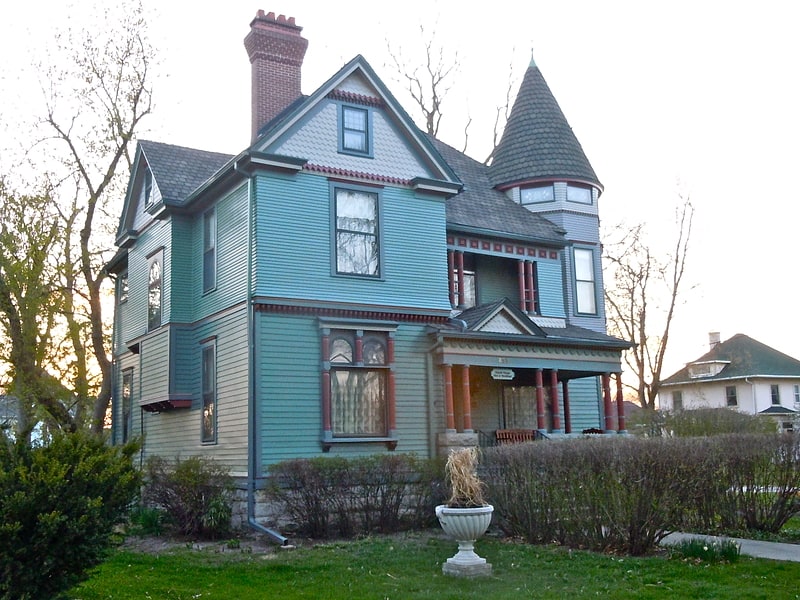
The E.A. and Rebecca Marsh House is a historic dwelling located in Grinnell, Iowa, United States. Marsh was a jeweler and a leading businessman in the city. His wife, Rebecca Penrose Johnson, bought the property in 1891. Her father was a successful businessman who amassed his own fortune, which is probably why the property was bought in her name. The two-story frame structure features a hipped roof with cross gables and a corner tower. It is one 19 Queen Anne houses in Grinnell with a corner tower. Unlike most of the others, it has maintained a high degree of historic integrity. The house was listed on the National Register of Historic Places in 1999.[10]